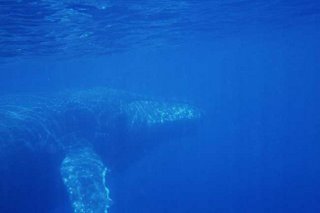Once more I wake to a fantastic sunrise with the early morning rays shimmering off the tropical lagoon that lies approximately 20 metres from my hut. However, on this particular morning I won’t have time to sit back in admiration for I have bigger fish to fry. For the past month I have been attempting to construct a whale watching platform on a small island in the lagoon that will be used to spot the humpback whale populations that grace this coastline between July and September. One would think that a small platform 5 metres high would be a simple task to achieve, and if we were back in the UK this would indeed be the case. However, here in Madagascar we work to a very different time span and with all manner of complications which, for my own sanity and for your amusement, I will regale you with now.
First up, we need four large corner pillars, not an easy thing to find, especially when working for a conservation organisation where one feels slightly guilty about using local materials from our mangrove forests. We hear a rumour that there are some telegraph poles just ‘lying around’ in Morombe, the nearest large town, so we dispatch Bic, our local superman, to locate these precious items and bring them home. After some furtive sneaking around Morombe he finds some suitable poles (“only a little woodworm”) and attempts to send them back to camp on 2 tiny pirogues (small, hollowed-out canoes used by the local Vezo fishermen), which will not be rivalling cargo ships for their weight-bearing abilities. Unfortunately, the Vezo fishermen take one look at our posts, jump into their boats and sail off into the sunset shaking their heads furiously and lamenting upon the crazy veza (foreigners). Plan B: we find a 4×4 camion, which takes 4 days to arrive on camp, and upon unloading the first pole is unceremoniously dumped to the ground by the unloading crew (including myself) where it splits in half. Excellent. We now think about changing the platform plans to a tripod-style building but realise that health and safety regulations just will not allow it, so opt to get some metal braces to seal the broken shaft of the problem pole. The local blacksmith can do this, but unfortunately this coincides with the annual Madagascan holiday of Independence which goes on for about a week, so approximately a month on we have our 4 main posts.
The rest of the materials should be slightly easier to find, I think, but it then takes 5 days for our boat driver to attain this on his pirogue as the wind dies and he is stranded literally 10 miles from camp. Anyway, we finally have all the materials, all we need to do is go to the local Catholic mission to cut some of our wood into planks and we are done. Unfortunately the father is not there for 4 days and on his return he informs us that he will not allow us to use his saw but he may change his mind later on. This little fit of pique comes to an end 3 days later and we lug our wood through the village to be altered, then back again to camp. We are drawing ever nearer to our goal but the finishing line still alludes us. We need to get the four posts over to Nosy Hao (aforementioned small island) and it takes another 3 days to find two sufficiently insane pirogue drivers to do this. They then discard our precious cargo on the wrong side of the island so the staff and volunteers have to go over and manhandle them across to the other side.
The wood is in place, we just need someone to turn it into a whale watching platform. The carpenter we had lined up apparently left Andavadok the previous week for pastures new (not exactly a common occurrence here) so we find a suitable replacement in the local bar. Stupidly, we think the price we agreed whilst he was full of bonhomie would stand, but as we discover the following day this is not the case, so after another full hour of negotiation we settle for good, with the promise that in one week we will indeed have our platform. As I sit here typing I am filled with cautious optimism that my project will finally get underway sometime between now and Christmas, just in time to see the last humpback straggler pass through. But like I said, we are on Madagascan time – soooo, watch this space!
Lea Fennelly – Field Scientist


